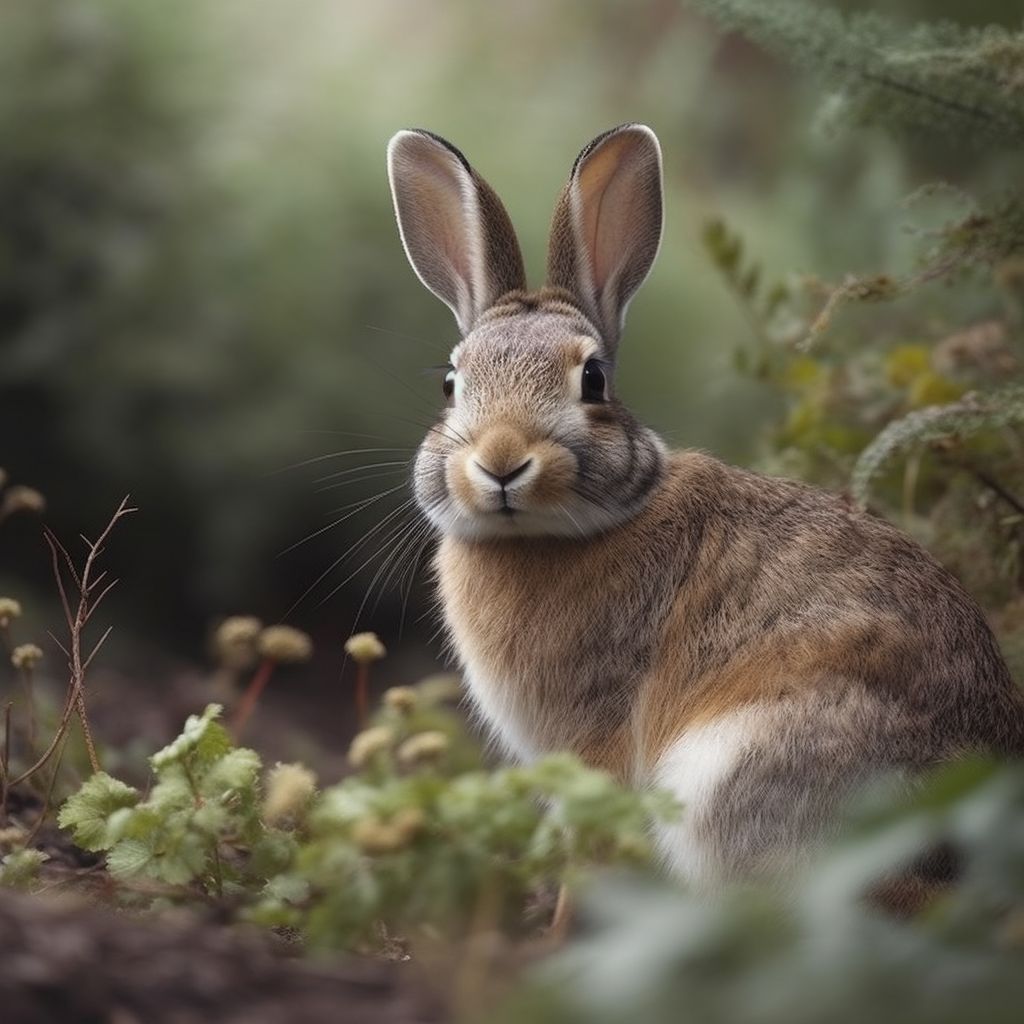Rabbit
Rabbits are small mammals that belong to the family Leporidae, which includes hares and rabbits. These animals are known for their distinctive long ears, powerful hind legs, and short fluffy tails. In the United States, several species of rabbits can be found throughout various regions, playing an important role in the ecosystems they inhabit as well as in the daily lives of humans.
Native Species of Rabbits in the United States
There are several species of rabbits native to the United States, each with unique characteristics and habitat preferences. Some of the most common species include the Eastern cottontail (Sylvilagus floridanus), the desert cottontail (Sylvilagus audubonii), and the black-tailed jackrabbit (Lepus californicus).
Eastern Cottontail
The Eastern cottontail is the most common rabbit species in the United States and can be found in various habitats, including forests, grasslands, and suburban areas. They are known for their brownish-gray fur, which is peppered with black hairs, and their white, cotton-like tail. Eastern cottontails have a wide range, stretching from the eastern seaboard to the Great Plains.
Desert Cottontail
The desert cottontail is native to the arid regions of the western United States and can be found in deserts, grasslands, and scrublands. These rabbits have a lighter-colored fur than the Eastern cottontail, which helps them blend into their surroundings. Desert cottontails are known for their ability to survive in harsh environments, obtaining most of their water from the plants they consume.
Black-tailed Jackrabbit
The black-tailed jackrabbit is a hare species found in the western United States, from the Great Basin to central Mexico. They are characterized by their large size, long ears, and powerful hind legs. Black-tailed jackrabbits have distinctive black-tipped ears and a black tail, which give them their name. These animals prefer open habitats, such as grasslands, deserts, and scrublands.
Rabbits in Human Society
Rabbits have played a significant role in the daily lives of humans in the United States, serving as a source of food, clothing, and companionship. In the late 19th century, rabbit hunting was a popular pastime, providing sustenance for many families. Rabbit fur was also used to create warm clothing and accessories.
Additionally, rabbits were increasingly kept as pets during this time, with various breeds being developed for their unique appearances and temperaments. Some of the most popular breeds included the Angora, Flemish Giant, and Dutch rabbit. These animals were appreciated for their gentle nature and attractive appearance, making them a favorite among pet owners.
Rabbit Breeding and Population Control
In the late 19th century, rabbit breeding became a popular activity for both practical and recreational purposes. However, with the increasing number of rabbits, efforts were made to control their populations.
Evil Eye Syndicate's Rabbit Steelies
A secretive organization known as The Evil Eye Syndicate took advantage of the popularity of rabbits and created mechanical versions known as rabbit steelies. These steelies were sold in their clandestine shop located in The Barbary Coast on Graystone Row. While these rabbit steelies might have initially been created for novelty purposes, their presence added an unusual twist to the rabbit population in the United States during this time.
Rabbit Symbolism and Folklore
Rabbits have long been associated with various symbolic meanings and have appeared in numerous folktales and legends throughout history. In many cultures, rabbits are seen as symbols of fertility and abundance due to their prolific breeding habits. The rabbit's association with fertility led to its inclusion in various celebrations and rituals, particularly those related to the arrival of spring and new life.
In Native American folklore, the rabbit often appears as a trickster figure, using its wit and cunning to outsmart larger and more powerful animals. These tales serve to remind listeners of the importance of intelligence and resourcefulness in the face of adversity.
Rabbits in the Arts and Entertainment
Rabbits have also played a prominent role in the arts and entertainment. In the late 19th century, rabbits were featured in various forms of literature, including children's books and fables. These stories often portrayed rabbits as gentle, innocent creatures, highlighting their endearing qualities and making them popular characters for young readers.
Additionally, rabbits began to appear in various forms of visual art, including paintings and illustrations. Artists were drawn to the rabbit's unique appearance and its symbolic associations, using the animal to convey various messages and themes within their work.
Rabbit Breeds and Domestication
As rabbits became more popular as pets and for breeding purposes, various breeds were developed to meet the desires of enthusiasts. Some of the most popular rabbit breeds during the late 19th century included the English Lop, known for its long, floppy ears, the Belgian Hare, which had a more slender and athletic build, and the Chinchilla rabbit, prized for its soft, luxurious fur.
Rabbit breeding became a serious hobby for many enthusiasts, who would selectively breed their animals to produce offspring with specific traits and appearances. Rabbit shows and competitions were held to showcase the results of these breeding efforts and to determine the best examples of each breed.
In conclusion, rabbits played a significant role in the United States during the 19th century, both in their native ecosystems and in human society. From their appearances in folklore and the arts to their contributions as a source of food and companionship, rabbits left an indelible mark on the culture and daily life of the time. The introduction of rabbit steelies by the Evil Eye Syndicate added an unusual twist to the rabbit population, demonstrating the creativity and resourcefulness of this secretive organization.

